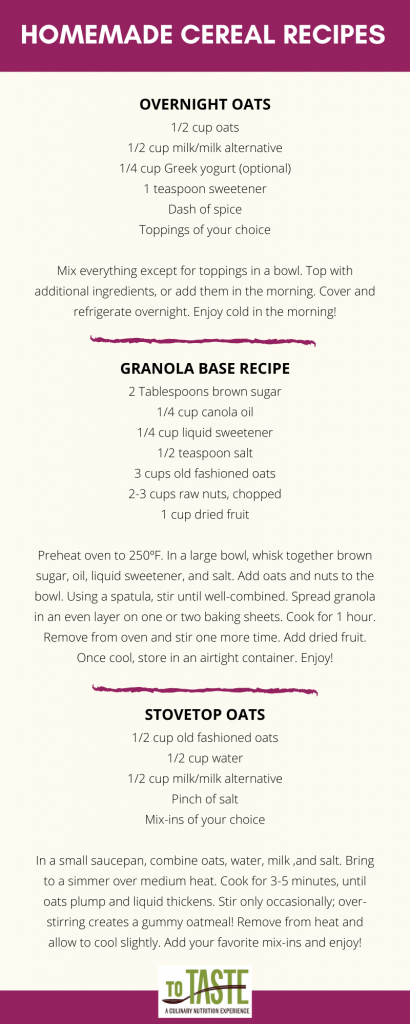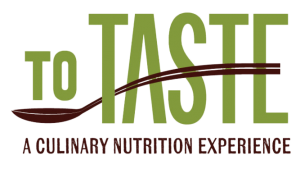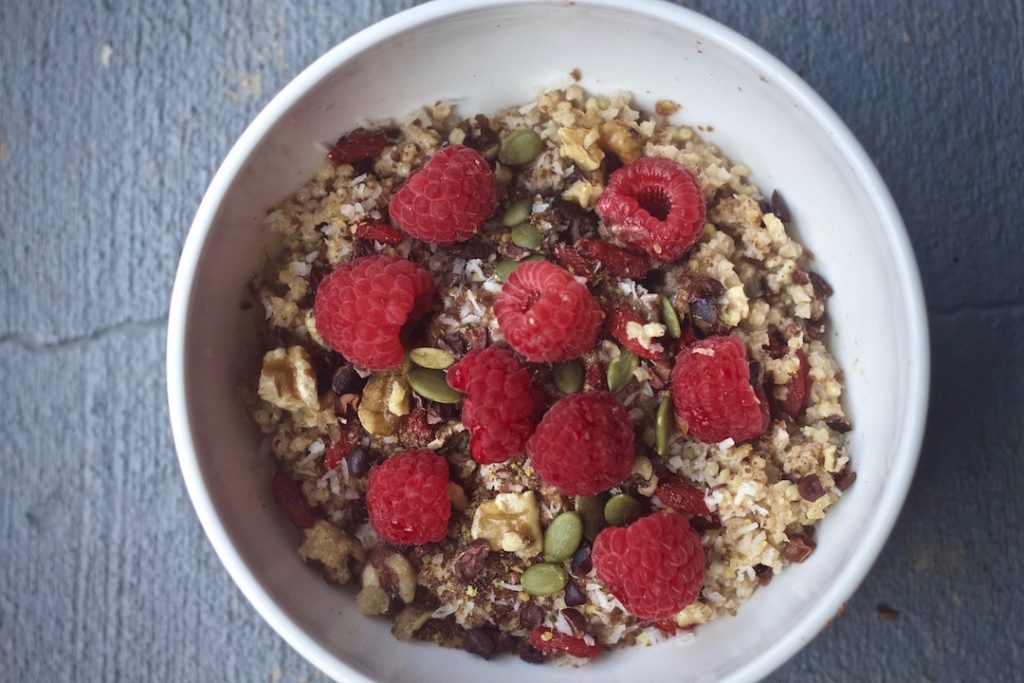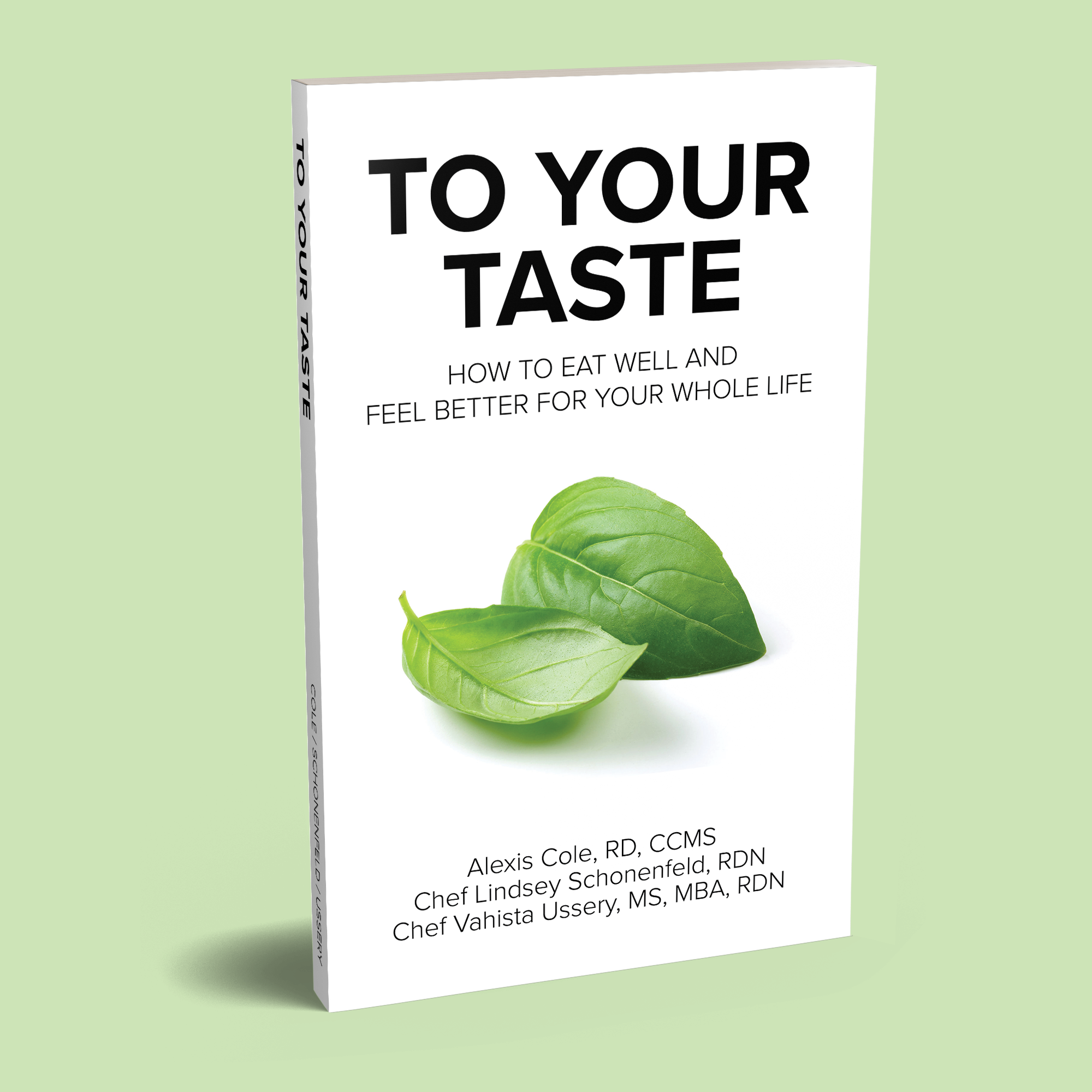“Silly Rabbit, Trix are for kids!”
“Kid Tested. Mother Approved.”
“They’re grrreat!”
“Snap! Crackle! Pop!”
“They’re magically delicious!”
“Cuckoo for cocoa puffs!”
Can you match each catchy slogan to its corresponding cereal?
Although we applaud the marketing success of these brands in creating memorable tag lines, we’re less impressed by the nutritional quality of the products that they represent. Most breakfast cereals contain too much added sugar to be considered a healthy breakfast, which can create negative health consequences. Learning how to make your own healthy cereal can set you up for a day full of energy while still providing all of your favorite parts of breakfast!
Benefits of Breakfast
Whether you eat breakfast at 6 a.m. or 11 a.m., your first meal of the day is inherently breakfast, as you are breaking your overnight fast; hence the term, break-fast. The foods that you consume at this first meal can affect your energy, mood, appetite, weight, and more. Choosing foods that contain fiber, protein, and healthy fats can prevent blood sugar spikes and crashes, keep you satisfied for longer, and help you maintain focus and energy throughout your morning. (1, 2, 3, 4)
What makes up a healthy breakfast?
We recommend using MyPlate or Harvard’s Healthy Eating Plate as a guide. Check out our healthy plate makeover article for more specific guidance.
We recognize that it can be challenging to get vegetables in at breakfast, so fill half your plate with fruit instead. Make it a point to double up on vegetables at lunch or dinner, or snack on them during the day. You can also find some creative ways to incorporate veggies at breakfast, such as tossing spinach into a smoothie or adding chopped veggies to an omelette.
Here are a few healthy breakfast ideas:
- Eggs: scrambled, poached, omelette, sunny-side-up
- Whole grain products: toast, muffins, pancakes, waffles
- Oats: overnight, steel cut, old-fashioned, one-minute, granola, muesli
- Smoothies
- Yogurt or kefir
- Fresh or dried fruit
- Nuts/nut butter
For more specific ideas on which ingredients to use, check out our ingredient guide!
Is cereal healthy?
Well, that depends. Technically, “cereal” is another term for “grain”, which is a grass cultivated for consumption. (5) Grains (specifically whole grains) contain carbohydrates, vitamins, minerals, fats, fiber, and protein – essential nutrients for optimal health.
However, when most of us think of the term “cereal”, we usually think about the sweet breakfast food that is eaten in a bowl of cold milk. Many breakfast cereals are marketed as “healthy”, boasting claims about containing grains, essential vitamins and minerals, and being a “part of a well-balanced breakfast”.
However, when you turn the box over and look at the nutrition label, many of these so-called “healthy” cereals are packed with added sugars, dyes, and artificial flavors. It’s important to be wary of hidden sugars, as excess intake can lead to negative health consequences. Additionally, most breakfast cereals don’t contain adequate amounts of dietary fiber or protein, which keep you satisfied and help maintain steady energy throughout the morning.
It’s best practice to aim to consume 5-10 grams of fiber per meal, and to keep total daily added sugars under 24 grams for women and children and under 36 grams for men. Keep these numbers in mind when looking at cereal boxes at the grocery store.
We can attest to the frustrating amount of time it takes to flip over boxes and boxes of cereal at the grocery store, trying to figure out which ones meet our ingredient and nutrition standards. However, by learning to make your own breakfast cereal at home, you take the guesswork out of buying cereal and put your health into your own hands!
How do you make cereal?
If you’re trying to figure out how to make your own Fruity Pebbles, Cocoa Puffs, or Golden Grahams, we probably won’t be of much help to you. However, we can give you some healthy cereal ideas that are better than store bought!
Our top three homemade cereal recipe ideas are:

If you’re not quite ready to take the step to make homemade cereal from scratch, that’s okay! Set a goal to find a breakfast cereal with adequate amounts of fiber and protein, or add ingredients that will contribute these nutrients, such as fresh fruit, Greek yogurt, nut butter, or seeds.
We’d love to hear how you can make your own healthy cereal to YOUR taste in the comments section below!
To YOUR Taste!
Lexi










